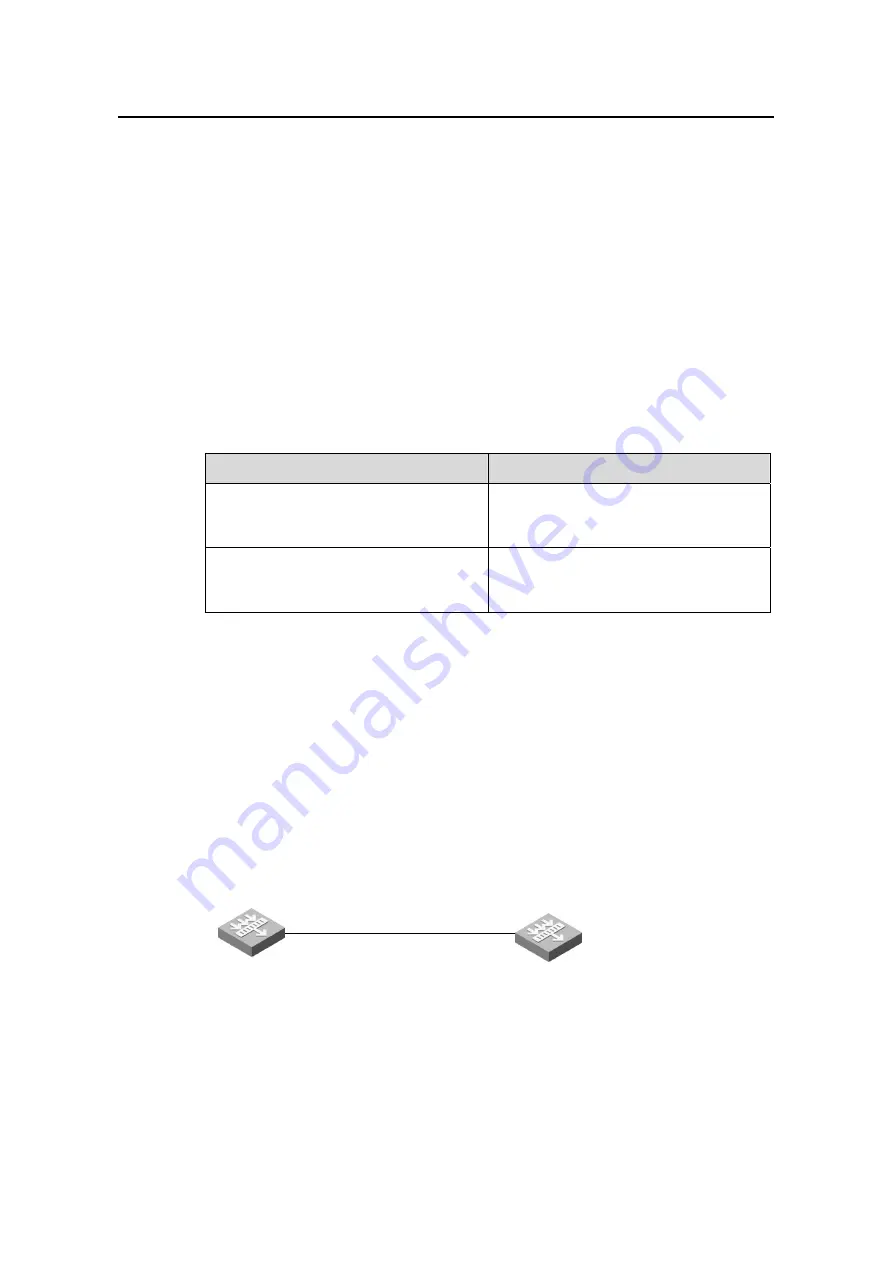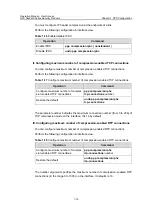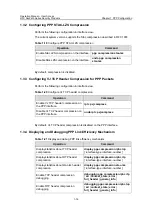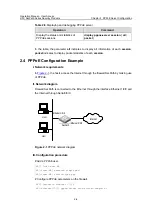
Operation Manual – User Access
H3C SecPath Series Security Products
Chapter 3 PPPoE Client Configuration
3-5
When a PPPoE session works in permanent on-line mode, if it is terminated by the
reset pppoe-client
command, the firewall will automatically recreate a PPPoE session
in 16 seconds. When a PPPoE session works in packet triggering mode, if it is
terminated via the
reset pppoe-client
command, the firewall will recreate a PPPoE
session only upon data transmission.
No matter a PPPoE session works in permanent on-line mode or in packet triggering
mode, it will be deleted permanently by the
undo pppoe-client
command. If it is
necessary to recreate a PPPoE session, the user must reconfigure it.
3.3 Displaying and Debugging the PPPoE Client
Execute the
display
command in all views and the
debugging
command in user view.
Table 3-5
Displaying and Debugging the PPPoE client
Operation
Command
Display the status and statistics of a
PPPoE session
display pppoe-client session
{
summary
|
packet
}
[
dial-bundle-number
number
]
Enable the PPPoE client debugging
debugging pppoe-client
{
all
|
data
|
error
|
event
|
packet
|
verbose
}
[
interface
type
number
]
3.4 Typical PPPoE Client Configuration Example
3.4.1 Typical PPPoE Client Configuration Example
I. Network requirements
SecPath1 and SecPath2 are connected using interface Ethernet1/0/0. SecPath1
authenticates SecPath2 using PAP or CHAP.
II. Network diagram
SecPath1
e1/0/0
SecPath2
e1/0/0
Figure 3-2
Network diagram for PPPoE client
III. Configuration procedure
When PAP authentication applies, configure the firewalls as follows:
1) Configure
SecPath1


































